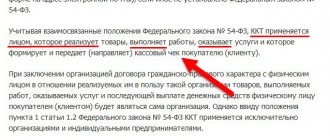general information
The use of business trips by employers is regulated by the Labor Code and other regulations. At the same time, he is obliged to guarantee the person sent on a business trip reimbursement of all his expenses. Registration of a business trip is carried out in accordance with established rules.
An employee can drive his own or a company car, or use public transport to travel. There is no minimum period for a business trip. Based on this, the employee can stay on a business trip for one day and receive appropriate compensation.
The duration of a business trip largely depends on the following factors:
- task scope;
- difficulty in completing the order;
- additional task characteristics.
There is also no maximum duration for a business trip. The norms that set a limit of 40 days for a business trip, excluding time on the road, were cancelled.
Decor
It is important for workers to know what documents are issued before traveling in 2021. There are various nuances of registration, for example, if an employee goes on a business trip in a personal car, then a memo and a waybill will be required. By law, some documents that were previously used when registering a business trip are no longer used. This is a travel certificate, official assignment, etc.
However, at some enterprises managers continue to use them, having issued the corresponding local acts.
When sending an employee on a business trip, the manager is obliged to issue an appropriate order. For this, there is a legally established form T-9 or T-9a, if we are talking about sending several employees. In addition, the enterprise may have a different form of order.
If an employee goes on a business trip using official or personal vehicles, the order contains the following information:
- Company name;
- date and number;
- information about the employee;
- information about the place of business trip;
- duration of the trip;
- target;
- details about vehicles.
The order must be signed by the immediate supervisor of the posted employee. Based on it, the accounting department carries out the necessary calculations and issues daily allowances to the person.
Business trip documents
Before sending an employee on a business trip, you need to prepare a corresponding order. The document must be signed by the head of the organization or an employee authorized by him (for example, a deputy).
Such rules are established by paragraph 3 of the Regulations, approved by Decree of the Government of the Russian Federation of October 13, 2008 No. 749.
It is not necessary to issue a work assignment and travel certificate for an employee (Resolution of the Government of the Russian Federation of December 29, 2014 No. 1595). These documents were canceled as of January 8, 2015. However, the purpose of the trip must still be documented. Otherwise, the tax office may have doubts about the need for the trip and the daily allowance paid to the employee. Therefore, record the task that the employee must complete on a business trip directly in the order sending the employee on a business trip.
A commercial organization may, at its own discretion:
- draw up an order in a unified form;
- use independently developed forms approved by the head (provided that they contain all the necessary details provided for in Part 2 of Article 9 of the Law of December 6, 2011 No. 402-FZ).
But in the unified form there is no special column where the purpose of the trip could be described. Therefore, if you do not formalize the official assignment separately, then it is better to draw up an order in your own form.
Expenses
Almost all expenses of posted workers are subject to reimbursement by the employer (Article 168 of the Labor Code of the Russian Federation). Among these expenses are:
- per diem, which the employee spends on food and other needs;
- travel (spending on gasoline);
- rental of property;
- other expenses.
As for the amount of daily allowance, the law sets a maximum for employees of government agencies. Private organizations have the right to independently set the amount, but there are nuances. The maximum daily allowance, which is not subject to personal income tax, in 2020 is 700 rubles for trips within Russia and 2.5 thousand rubles for business trips abroad. Other travel allowances are also calculated based on the organization’s budget.
To receive an advance, the employee must write an application indicating the required amount. It is signed by the manager and then transferred to the accounting department. Money is transferred to a subordinate’s bank card or given in cash. After returning, the employee must hand over the remaining funds to the accounting department on the basis of the appropriate order.
After returning, the employee is required to draw up an advance report and attach the following documents to it:
- hotel receipts or other documents confirming accommodation expenses;
- receipts for payment of fuel and lubricants;
- waybill, service note, etc.
Example instructions for drivers going on business trips, long-distance routes
General safety requirements
1. For long business trips (long-distance flights) or for work away from the organization, the most disciplined drivers are selected, having experience and length of service on these categories of vehicles, who have passed medical examinations, safety and labor protection instructions, internships and testing of knowledge of technical requirements safety and labor protection.
2. When two or more drivers of vehicles are sent on a business trip to work together for a period of more than two days, an employee responsible for labor protection is appointed by order of the head of the organization. Compliance with the requirements of this employee is mandatory for all drivers in this group.
3. When stopping for rest or repairs outside populated areas, the employee responsible for labor protection must monitor compliance with labor protection and fire safety rules.
4. The driver must know that the most dangerous factors that may affect him in the process of performing work are:
- suspended vehicle or units;
- hot coolant and steam;
- flammable substances;
- gases and other toxic substances and chemicals;
- fuel;
- equipment, tools, devices;
- The driver falls as a result of his careless actions when getting out of the car.
5. Each driver must be trained and be able to provide first aid.
Safety requirements before starting work
6. A driver going on a business trip is obliged to:
- have the following documents with you: driver’s license, registration documents for the vehicle, waybill, documents for the cargo being transported, power of attorney for the right to receive the cargo, passport;
- undergo a pre-trip medical examination, about which an entry is made in the pre-trip medical examination log and a mark is placed on the waybill about his passing the medical examination and about the driver’s admission to the flight;
- receive instructions about the route and schedule, rest areas, driver changeover locations (if 2 drivers are sent on the trip);
- receive instructions on the rules for transporting cargo, people, meteorological conditions, road conditions and operating modes along the route;
- receive instructions about the time of arrival at the destination and return.
7. In cases of detected vehicle malfunctions, travel is prohibited.
Safety requirements during operation
8. During work, the driver is obliged to comply with the requirements of the “Road Rules”, monitor the technical condition of the vehicle, control the placement, fastening and condition of the load in order to avoid it falling and creating obstacles to traffic.
9. The driver is prohibited from:
- drive a vehicle under the influence of alcohol or drugs, under the influence of medications that impair reaction and attention, in a sick or tired state that jeopardizes traffic safety;
- transfer control of a vehicle to persons under the influence of alcohol or drugs, under the influence of medications that impair reaction and attention, in a sick or tired state, as well as to persons who do not have a driver’s license to drive a vehicle of this category;
- deviate, change the route without permission, if this is not due to deterioration of road or climatic conditions, all deviations from the route must be noted in the waybill;
- violate the work and rest regimes established by the task, the traffic schedule (with a cumulative accounting of working hours, the duration of work should not exceed 10 hours during the day; in the case when, when carrying out intercity transportation, the driver must be given the opportunity to get to the appropriate resting place, the duration of daily work may be increased to 12 hours, the duration of daily rest should be at least 12 hours a day, overtime work should not exceed four hours for each driver for two consecutive days);
- It is strictly forbidden to sleep in the cabin while the engine is running;
- transport people in the back of a truck;
- open vehicle doors if this interferes with other road users;
- violate the speed limit;
- brake sharply unless this is necessary to prevent a traffic accident;
- carry out overtaking at controlled intersections with entry into the lane of oncoming traffic and at uncontrolled intersections when driving on a road that is not the main one (with the exception of overtaking at roundabout intersections, overtaking a two-wheeled vehicle without a side trailer, permitted overtaking on the right), at pedestrian crossings if there is pedestrians on them, at railway crossings and closer than 100 meters in front of them, at the end of an ascent and other sections of roads with limited visibility with access to oncoming traffic;
- transport cargo if it makes it difficult to drive, disrupts the stability of the vehicle, covers external lighting devices and reflectors, registration and identification marks, creates noise, generates dust, pollutes the road and the environment. If the condition and placement of the cargo do not meet the established requirements for safe transportation, the driver is obliged to take measures to eliminate the listed reasons or stop further movement;
- enter a railway crossing when the barrier is closed or beginning to close (regardless of the traffic light signal), when the traffic light signal is prohibiting (regardless of the position and presence of the barrier), when the crossing duty officer is prohibiting the signal, if there is a traffic jam behind the crossing, if the crossing is approaching within sight train (locomotive, handcar), open the barrier without authorization, drive around vehicles standing in front of the crossing into oncoming traffic.
See also: Registration of new cars with the State Traffic Safety Inspectorate
10. Parking for the purpose of a long rest or overnight stay outside a populated area is permitted only in designated areas or off the road.
11. If forced to stop in a place where stopping is prohibited, the driver must take all possible measures to remove the vehicle from this place (if this is not possible, turn on the hazard warning lights and place an emergency stop sign at a distance of at least 15 m in a populated area point and not less than 30 m outside the populated area).
12. It is prohibited to drive vehicles if there is a malfunction of the service brake system, steering, coupling device (as part of a road train), headlights are not lit (missing) and tail lights on roads without artificial lighting in the dark or in conditions of insufficient visibility, inoperative Driver's side windshield wiper during rain or snowfall.
Safety requirements in the event of an emergency
13. In the event of a traffic accident, the driver involved in it is obliged to: immediately stop (do not move) the vehicle, turn on the hazard warning lights and display an emergency stop sign (flashing red light) at a distance that provides timely warning to other drivers in a particular situation. danger. Do not move objects related to the incident; take possible measures to provide pre-medical medical care. help the victims, call an ambulance. help". And in emergency cases, send the victims in a passing vehicle, and if this is not possible, deliver them in your vehicle to the nearest medical facility, provide your last name, registration plate of the vehicle with the presentation of an identification document and return to the scene of the incident, clear the roadway, if the movement of other vehicles is impossible.
14. If it is necessary to clear the roadway or deliver victims in your vehicle to a medical facility, first record in the presence of witnesses: the position of the vehicle, traces and objects related to the incident and take all possible measures to preserve them and organize a detour to the scene of the incident; report the incident to the police and your organization.
See also: Bill on amendments to the law “On technical inspection of vehicles” (continued)
15. When towing on a flexible hitch, a distance between the towed vehicles must be ensured within 4-6 m (and the flexible hitch must have warning devices (at least two) flags or shields in the form of flags (200 x 200 mm) with marked diagonally with red and white alternating stripes), and when towing with a rigid hitch, no more than 4 m.
16. Towing is prohibited:
- vehicles with no steering function;
- two or more vehicles;
- vehicles with an ineffective braking system, if their actual weight is more than half the actual weight of the towing vehicle.
17. If the actual weight is lower, towing of such vehicles is allowed only with a rigid hitch.
Safety requirements after completion of work
18. After finishing work (business trip), the driver is obliged to:
- After parking the car overnight or during the day, close the supply valves (for compressed gas) or the main valve (for liquefied gas), exhaust the gas from the power system, then turn off the ignition and disconnect the ground.
- Notify the head of the transport operation department about deficiencies discovered during work (business trip).
Let me remind you that on the website, in the “Road Safety Documents” section, you can find samples of documents necessary for organizing work on road safety.
You can also purchase a ready-made package of documents for organizing work on road safety on the website www.trans-otdel.ru. The cost of the package is 2500 rubles.
All documents are presented in Word and Excel format. In order to receive all the listed documents, just write to the email indicated in the “Contacts” , and you will be contacted within a day. Documents will be sent electronically to the email address you provided after confirmation of payment.
Head of the Transport Department Zuev Seraphim






